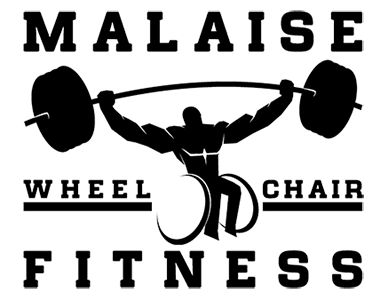Below is an index of different options for a wheelchair lifter. Again, this is mostly focusing on free weight variations as a majority of wheelchair users, who can perform basic transfers, can use most of the upper body pulley-based machines. This is a focus on the free weight options broken down by body part. Over time I will try to add in videos and/or pictures of how I do the specific exercise from setting up, stabilizing myself and then actually executing the lift.
Shoulders
For shoulders I prefer pressing as the main exercise. From the Wheelchair you will have to get a bit creative on how you do a free weight Military Press. I actually use an adjustable Incline bench and put it on a setting over 45 degrees, but well under a straight 90 degrees. At 90 degrees we have almost no balance. When starting out with the military press it may be wise to utilize the Smith Machine at your gym, as this is one of the only exercises I would ever recommend Wheelchair users to touch that piece of junk. For the military press, it can work quite well.
- Military Press
- DB Military Press
- Landmine Military Press from Bench
- DB Raises (Lateral, Rear, Front)
Traps
Shrugs are almost always the only exercise people do for their traps, and it does hit the traps well enough but people too often use crappy form and too much weight. With this combination the lifter gets almost no benefit over time. For both of the exercises listed I prefer to place a Barbell on the floor with one end up against the wall with NO WEIGHT, and I actually pull up by grabbing the collar from the other end and add weight to that end. (I will add pics!)
I love the 1 arm snatch, it acts as a quick and explosive movement where you lift the weighted end of the barbell from the floor up to your armpit. Ive received incredible results over the years once I introduced this exercise.
- 1 Arm Snatch from Floor w/ Barbell - Video
- Shrugs w/Barbell
Chest
Chest is among the easiest exercise for us wheelchair lifters to get started with as simple pushups from the floor or even on a bed will be beneficial, but as you get stronger you will want more of a challenge. I again prefer any bar pressing as the main lift, although dips are incredible and there are several ways you can do Dips in a gym. ANd almost none of them involve using the actual dip mechanism in a typical gym as the handles are often WAY too high. For dips in a gym for wheelchair users find the Glute Ham machine that people often are doing back extensions from. Something like this, as the handles can be moved up and down and we can do these straight from the chair by wheeling up to the handles.

